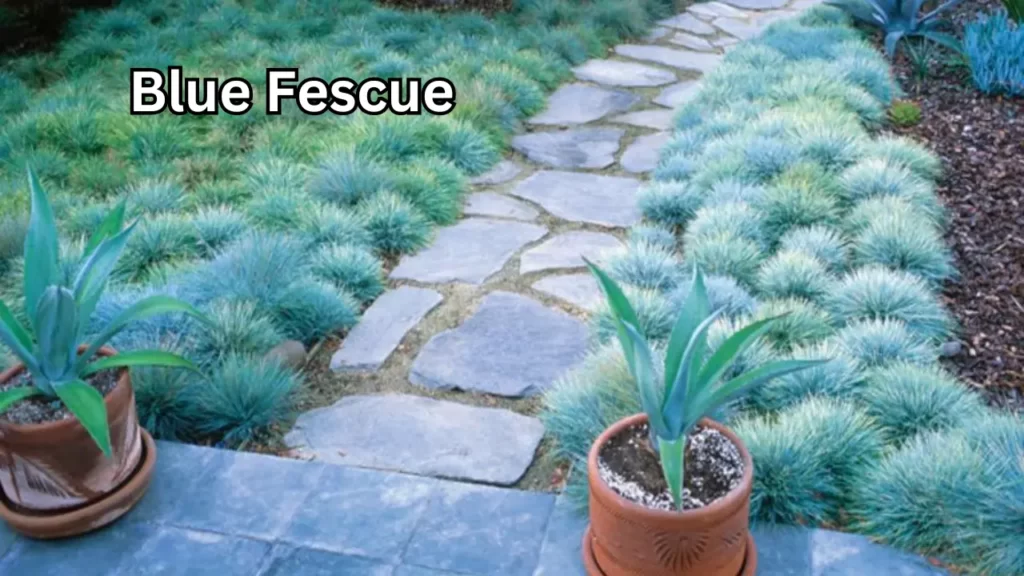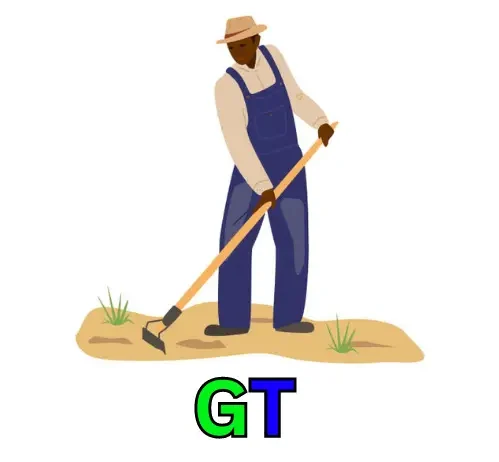Choosing the right type of ornamental grass for your garden increases the aesthetic appeal of your landscape. But there are many options, including Blue oat grass and blue fescue grasses, which most homeowners choose for their lawns.
So, here in this blog, we will make an in-depth comparison of Blue Oat Grass vs Blue Fescue with its growing condition, maintenance, cost, and much more which will help you to choose between these grass types which increases the beauty of your lawn.

Introduction to Ornamental Grasses
As the name suggests the Ornamental grasses are known for their unique attractive structures which increase the visual appeal of the landscape. Rather than its visual appearance it has become popular among homeowners for its features like low maintenance, versatility, etc.
These types of plants are commonly used for landscape borders, decorative and ground covers which gives a natural beauty to the landscape.
Blue Oat Grass vs Blue Fescue: Comparision
| Features | Blue Oat Grass | Blue Fescue |
|---|---|---|
| Scientific Name | Helictotrichon sempervirens | Festuca glauca |
| Height | 2-3 feet | 8-12 inches |
| Color | Intense blue-gray | Silvery-blue |
| Texture | Long, narrow leaves | Fine foliage in dense tufts |
| Form | Clumping growth habit | Neat mounds |
| Preferred Sunlight | Full sun | Full sun, tolerates light shade |
| Hardiness Zones | USDA zones 4-9 | USDA zones 4-8 |
| Complementary Plants | Lavender, sedum | Colorful annuals, edging plants |
| Watering Needs | Occasional watering | Drought-tolerant once established |
| Propagation | Divisible in early spring | Divisible in early spring |
Also Read: Kentucky Bluegrass vs Fescue vs Ryegrass which is best for your garden

Blue Oat Grass
Blue oat grass which is scientifically known as the Helictotrichon sempervirens, become popular among homeowners for its unique instance blue-gray foliage. This plant reaches a height of up to 2-3 feet with a clumping growth structure.
Due to its clumping growth structure and blue-gray-colored foliage, this plant is an excellent choice for landscape borders and near pathways.
Blue Fescue
Blue fescue is a different type of fescue from the Fescue Grass species and it’s scientifically known as Festuca glauca. It is another option for people who are looking for a grass with blue color and fine texture like blue oat grass.
The blue grasses are smaller in size compared to the blue oat grass where these fescues are growing up to 8-12 inches tall. The Blue fescue also has similar clumping growth habits which looks similar to the blue oat grass but smaller in size.

Color Comparison
When it comes to color differences Blue ota grass and Blue fescue are both blue in color as their name suggests. But there are some color textures that make them different from each other.
Now the Blue oat grass has a deeper steel blue color whereas the Blue fescue has a softer silver blue color.
So, if you need grass with a deeper blue shade then the Blue Ota grass is an excellent choice or if you prefer grass with a softer blue shade then Blue fescue is recommended.
Also Read: Kentucky 31 Tall Fescue vs Bluegrass A Quick Comparison
Texture and Form
In terms of texture and form, both grasses have their unique texture which makes them different from each other. The Blue Ota grass has long narrow leaves that create a gentle curvy structure as they grow.
The Blue Fescue foliage also grows in a similar curvy structure but it makes more dense appeal compared to the blue Ota grass.
The curvy structure of the foliage from both these grasses creates a spherical structure, which looks different and attractive to the beauty of a landscape.
Growing Conditions
Both the Blue Ota grass and Blue fescue can adapt to different growing conditions. The Blue Ota needs full sun and well-draining soil to grow at its maximum potential. Also, it can tolerate drought conditions after it is well established in the landscape.
The Blue fescue also needs full sun to grow at its maximum potential but it can tolerate light shade also. Overall the blue fescue also tolerate drought condition and it is well suited for dry landscapes.
Maintenance Requirements
The most beneficial feature of ornamental grasses is their lower maintenance requirement, both the blue oat and blue fescue need minimal maintenance to thrive.
Also, it needs occasional watering when it is at the beginning of growing condition, and they even can tolerate drought conditions.
To promote healthy growth you can trim both these grasses in late winter or early spring.
Also Read: Red Fescue vs Tall Fescue
Complementary Plants
Due to the drought-tolerant ability of blue oat grass, it will be a good complementary plant with other drought-tolerant plants like sedum or lavender.
When it comes to blue fescue grass, due to its compact size it will be a good choice to plant alongside edging plants and colorful annuals. These combinations of plants will increase the beauty of the landscape even more in seasons.
Hardy Zones
When it comes to growing conditions and area the blue oat is well-suited for USDA zones 4-9, which covers a different range of climates including cold to moderate warm conditions.
The Blue fescue is also best for similar areas as per the blue oat, which is around zones 4-8.
FAQs
Is the Blue oat is same as the blue fescue?
Blue oat and blue fescue grasses have similar features but texture and size are different from each other.
Is blue oat grass invasive?
No, the blue oat grass is not invasive.
Do deer eat blue fescue grass?
No, deer don’t like to eat blue fescue grass.
Is the blue grass better than fescue?
Both blue grass and fescue grass are best to grow in a garden but it depends on the climate and the growing condition of your region to decide which one is better for you.
Conclusion
Now according to our conclusion, there is not any winner in this comparison because both grass types have similar features but some minor changes make them different from each other. If you need grass of little certain size then the blue oat is best for you or you can choose blue fescue which is smaller in size.
